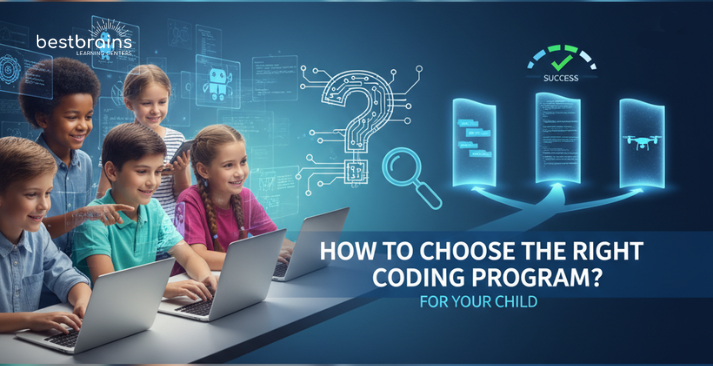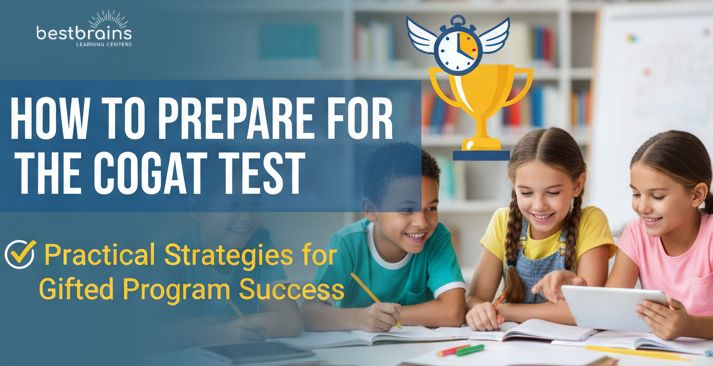Melissa
How to Choose the Right Coding Program for Your Child
In today’s world, technology is everywhere — from phones and video games to cars and smart homes. And behind every piece of technology lies coding — the language that powers it all.
That’s why more parents today are looking for coding classes for kids — not just to prepare them for the future, but to help them develop problem-solving, logic, and creativity from an early age.
But when you search for “coding programs” or “coding classes near me,” you’ll find dozens of options. So how do you know which one is right for your child?
Let’s walk through everything parents should know before choosing a coding program that truly helps their child learn and grow.
Understand Why Coding Is Important for Kids
Coding is more than just typing commands into a computer. It teaches children how to think differently.
When kids learn coding, they:
-
Improve logical thinking: Coding helps kids break big problems into smaller steps — a skill useful in all subjects.
-
Boost creativity: Whether they’re creating a game or designing a story, coding encourages imagination.
-
Develop patience and focus: Kids learn to test, fix errors, and try again — which builds resilience.
-
Gain confidence: Seeing their own projects come to life makes children proud of their work.
At Best Brains of Melissa, we believe coding should empower children to think critically and creatively — not just memorize commands.
Match the Program to Your Child’s Age and Skill Level
One size doesn’t fit all when it comes to coding classes for kids.
A good program tailors lessons to the child’s age, attention span, and prior knowledge.
Here’s a quick breakdown:
-
Ages 5–7: Kids learn basic logic and patterns through fun, visual coding games like Scratch Jr.
-
Ages 8–10: They begin drag-and-drop coding, creating animations or games while learning sequencing and loops.
-
Ages 11–14: Students move to real-world programming languages like Python or JavaScript to solve bigger challenges.
Tip for Parents: Ask the institute how they group children — by age, skill level, or both. At Best Brains of Melissa, we carefully design coding lessons to ensure every student learns at the right pace without feeling bored or overwhelmed.
Look for a Structured and Progress-Based Curriculum
Many coding programs claim to teach coding, but not all follow a structured learning path.
When comparing coding classes, look for these key elements:
-
Weekly concept learning: New topics are introduced each week, keeping your child challenged and motivated.
-
Hands-on activities: Kids should build, create, and see what they’re learning.
-
Step-by-step progression: A good curriculum grows from simple logic to complex coding projects.
-
Regular feedback: Parents should receive updates about their child’s progress.
At Best Brains of Melissa, our non-repetitive teaching method introduces new skills each week — so children stay curious and continue improving consistently.
Make Sure It’s Fun and Engaging
Let’s be honest — kids won’t enjoy a class that feels like extra homework.
The best coding classes near you combine learning with fun, creativity, and exploration.
An engaging program should:
-
Use game-based learning to explain logic and problem-solving.
-
Encourage project-based work where kids can design their own stories, apps, or animations.
-
Create a positive, pressure-free environment that makes learning exciting.
At Best Brains of Melissa, children don’t just learn coding — they create.
Every week, they work on fun projects that build both their imagination and technical understanding.
Evaluate the Teachers and Their Teaching Style
Even the best curriculum won’t work without great teachers.
When exploring coding classes near you, pay attention to the instructors:
-
Are they trained to teach children (not just coding experts)?
-
Do they explain concepts in simple, relatable ways?
-
Do they encourage questions and experimentation?
Our teachers at Best Brains of Melissa are specially trained to make complex topics easy for kids. They focus on personalized attention, ensuring every student feels confident and supported throughout the learning journey.
Consider the Class Format and Flexibility
Parents are busy, and kids already have packed schedules. The right coding program should fit easily into your family’s routine.
When comparing options, ask:
-
Are classes available after school or on weekends?
-
Are they in-person, online, or a mix of both?
-
How often are sessions held, and how long do they last?
-
Are there small class sizes for better focus?
At Best Brains of Melissa, our flexible scheduling and small-group setting make it easy for children to get individual attention while balancing school and other activities.
Choose a Program That Builds Long-Term Skills
A strong coding program should teach more than just how to write code — it should teach how to think.
Look for programs that:
-
Gradually introduce advanced topics (like loops, functions, and logic).
-
Connect coding with real-life applications (like games, animations, and problem-solving).
-
Encourage kids to be curious learners beyond the classroom.
At Best Brains, our goal is to build a lifelong foundation — so your child isn’t just coding for today but learning skills that will shape their future.
Visit the Center or Try a Free Class
Before committing, visit the center or request a trial session.
This helps your child get comfortable and lets you see the learning environment firsthand.
Ask yourself:
-
Does my child seem engaged and happy during class?
-
Is the instructor attentive and encouraging?
-
Does the program feel structured but still enjoyable?
Best Brains of Melissa offers parents a chance to experience a class before enrolling — so you can be sure it’s the right fit.
Why Parents in Melissa Trust Best Brains for Coding
Parents choose Best Brains of Melissa because we offer:
-
A comprehensive learning experience — Coding, Math, English, and Abacus under one roof.
-
Certified teachers who specialize in child-focused education.
-
A structured, non-repetitive curriculum that keeps kids excited to learn.
-
Personalized attention in small class settings.
Our mission is simple: to help every child reach their full potential through creative, engaging, and challenging lessons.
Frequently Asked Questions (FAQ)
Q1. What is the right age to start coding classes for kids?
Most children can begin exploring coding as early as age 5 or 6 through visual, block-based programming. As they grow, they can advance into text-based coding languages. Best Brains Melissa offers programs designed for ages 3–14.
Q2. Does my child need prior computer experience?
No! Our beginner classes assume no prior experience. Instructors start with the basics from using a mouse and keyboard to understanding logic and sequencing.
Q3. How often should my child attend coding classes?
One to two sessions per week is ideal for consistent progress. Regular exposure helps kids retain concepts and stay excited about what they’re learning.
Q4. What’s the difference between online and in-person coding classes?
Online classes offer flexibility, but in-person programs like Best Brains Melissa provide real-time instructor support, peer interaction, and better engagement especially for younger learners.
Q5. What if my child loses interest or finds it difficult?
Our curriculum emphasizes fun and creativity. If your child feels stuck, our instructors personalize the approach to rebuild confidence and curiosity.
Q6. Why choose Best Brains Melissa for coding classes?
Because we focus on whole-child learning. With small classes, expert teachers, and a well-rounded curriculum that blends fun with education, we help your child master coding while growing stronger in math, English, and problem-solving skills.



